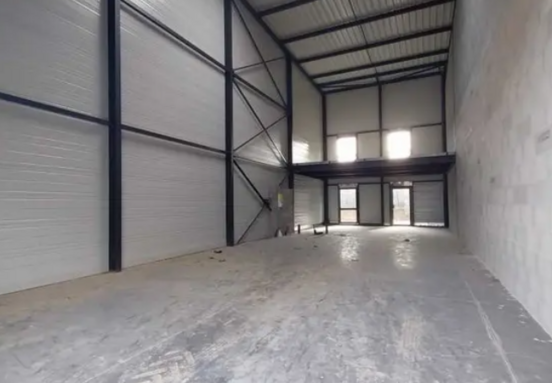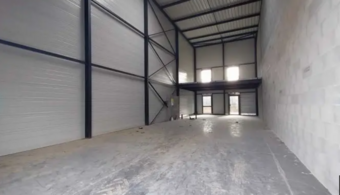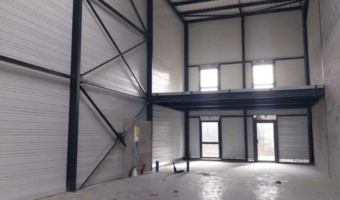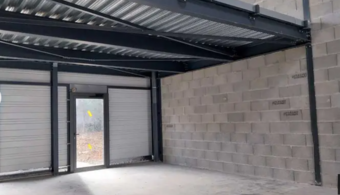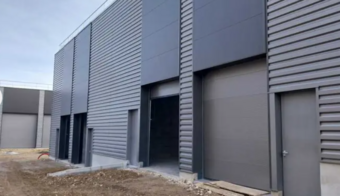1. Industry News and Events
New warehouse developments to watch in 2024
2024 marks an exciting time for warehouses, with several major developments redefining the logistics and distribution landscape. Here are some key trends to watch:
1.1. The integration of artificial intelligence
Artificial Intelligence (AI) continues to transform warehouse management. AI systems are now able to predict demand, optimise delivery routes and improve inventory management. By 2024, we will see increased adoption of AI solutions to improve operational efficiency and reduce costs.
1.2. Advanced automation
Automation technologies, such as picking robots and automated sortation systems, are becoming increasingly sophisticated. By 2024, warehouses will incorporate automated solutions to manage higher volumes of products with greater precision. Automated systems also mean better space management and fewer human errors.
1.3. Digitisation of warehouses
The digitisation of warehouses, including the use of Internet of Things (IoT) sensors and cloud-based warehouse management systems (WMS), continues to progress. These technologies provide real-time visibility of operations, improving decision making and inventory management.
1.4. Environmental developments
Pressure to adopt greener practices is increasing. By 2024, warehouses will implement energy efficient solutions such as intelligent energy management systems and low energy buildings. The focus is on reducing the carbon footprint and improving environmental sustainability.
Warehouse industry key events review
The past year has seen a number of major events in the warehousing industry that have had a significant impact on the way companies manage their operations. Here is a summary of the major events:
2.1. Exhibitions and conferences
- Logistics & Supply Chain Management Summit 2023: This event brought together industry leaders to discuss the latest innovations in warehouse and supply chain management. Discussions will focus on the impact of AI and automation on warehouse operations.
- Green Warehouse Expo 2023: The annual Green Warehouse Expo showcased the latest trends in sustainability. Exhibitors showcased technologies and practices to reduce the environmental footprint of warehouses.
2.2 Technological innovations
- Introduction of advanced WMS platforms: Several companies have launched new cloud-based warehouse management platforms offering advanced features such as real-time inventory optimisation and integrated order management.
- Next generation picking robots: Companies have introduced picking robots that can work with humans, increasing the efficiency and accuracy of warehouse operations.
2. Legal and regulatory advice
What you need to know about warehouse regulations
Warehouse regulations are complex and can vary considerably depending on the region and type of operation. Here are the key issues to consider to ensure compliance:
2.1. Safety standards
Warehouses must meet strict safety standards to protect employees and property. This includes compliance with fire safety regulations, personal protective equipment (PPE) and evacuation procedures. Ensure that your warehouse complies with local and national safety standards.
2.2. Environmental regulations
Environmental legislation imposes requirements on waste management, energy consumption and greenhouse gas emissions. Warehouses must comply with these regulations to minimise their impact on the environment. This may include requirements to implement recycling and hazardous waste management programmes.
2.3 Compliance with labour laws
Labour laws cover working conditions, working hours and employee remuneration. Warehouses must ensure compliance with laws on overtime, holidays and health and safety at work.
Navigating permits and standards for a new warehouse
Opening a new warehouse requires compliance with various legal and regulatory requirements. Here are some tips to help you navigate this complex process:
3.1 Obtaining permits
Before building or renovating a warehouse, it is essential to obtain the necessary permits from the local authorities. These may include building permits, environmental permits and planning permission. Contact local authorities to understand specific requirements and application procedures.
3.2 Compliance with building regulations
Ensure that your new storage facility complies with local and national building codes. These include building regulations, fire safety standards and accessibility requirements. Use qualified engineers and architects to ensure compliance.
3.3 Establish internal policies
Establish internal policies to ensure ongoing compliance. This may include procedures for waste management, employee safety and equipment maintenance. Train your staff in compliant practices to minimise the risk of non-compliance.
3. Articles on sustainability and ecology
How to make your warehouse greener: Solutions and benefits
Sustainability is becoming a growing priority for businesses, and warehouses are no exception. Here are some solutions for greening your warehouse and the benefits they can bring:
3.1 Renewable energy
Integrating renewable energy sources, such as solar panels or wind turbines, can significantly reduce your warehouse's consumption of non-renewable energy. Installing intelligent energy management systems can also help monitor and optimise energy consumption.
3.2 Environmentally friendly materials
Use green building materials to reduce the carbon footprint of your warehouse. Recycled and sustainable materials and low carbon construction solutions can improve the environmental performance of your building.
3.3 Waste management
Implement waste management programmes to minimise the amount of waste sent to landfill. Recycling and composting programmes and reducing packaging contribute to more sustainable waste management.
Sustainable practices in day-to-day operations
Adopting sustainable practices in the day-to-day management of warehouses is essential to reducing environmental impact. Here are a few recommended practices:
4.1 Transport optimisation
Reduce transport-related carbon emissions by optimising delivery routes and using fuel-efficient vehicles. Intelligent route planning can minimise distances travelled and driving times.
4.2 Equipment efficiency
Ensure that your equipment is regularly maintained to operate at optimum efficiency and reduce energy consumption. Using energy management technologies to monitor and optimise equipment performance can also contribute to more sustainable management.
4.3. Staff training
Train your staff in sustainable practices and encourage them to adopt green behaviours. Awareness raising and ongoing training can improve operational efficiency and reduce the overall environmental footprint.
Conclusion
Modern warehouse management is characterised by rapid technological developments, increasing regulatory requirements and a growing awareness of sustainability. By keeping abreast of the latest trends and implementing sustainable practices, companies can not only improve their operational efficiency, but also minimise their environmental impact.
